Musical European instruments have come a long way and are now created using a blend of plastic, metal, and various types of wood. However, there are also many traditional instruments from different cultures worldwide. It’s incredible to discover that some of these instruments are handcrafted using vegetables, and this article will delve deeper into the subject.
Gourd
Gourd is a term used to describe a group of crop plants that belong to the Cucurbitaceae family. This family includes several popular vegetables, such as pumpkins, cucumbers, squash, luffa, and melons. However, the term gourd refers explicitly to the fruits of plants in the Lagenaria and Cucurbita genera, as well as their dried-out, hollow shells. Gourds are grown all over the world in various species. They are typical food in many households and are often used to prepare soups, stews, and curries. In some cultures, gourds are also used to make various desserts, including pies and puddings. Apart from their culinary uses, gourds are also valued for their versatility. They have been used for centuries to create various items, such as bowls, cups, and musical instruments. Almost every culture has used gourds to make musical instruments, ranging from percussion to string and wind instruments.
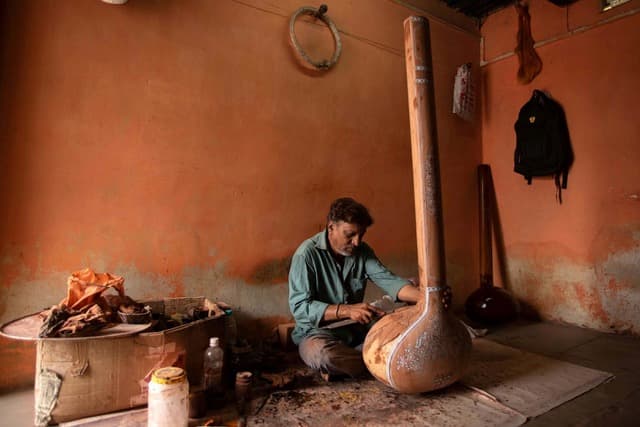
Sitarmakers of Miraj © map.sahapedia.org
Miraj, a city in the southern part of Maharashtra in India, is renowned for its unique and traditional method of making sitars. The skilled artisans of Miraj, who have been practicing their craft for generations, use locally grown pumpkins to create the iconic musical instruments. This intricate and time-honored process involves carefully selecting the right-sized pumpkin, drying and hollowing it out, and affixing a wooden neck and frets to create a beautiful and functional sitar. The sitars produced in Miraj are highly sought after for their exceptional quality of sound and craftsmanship and are treasured by musicians and collectors worldwide.
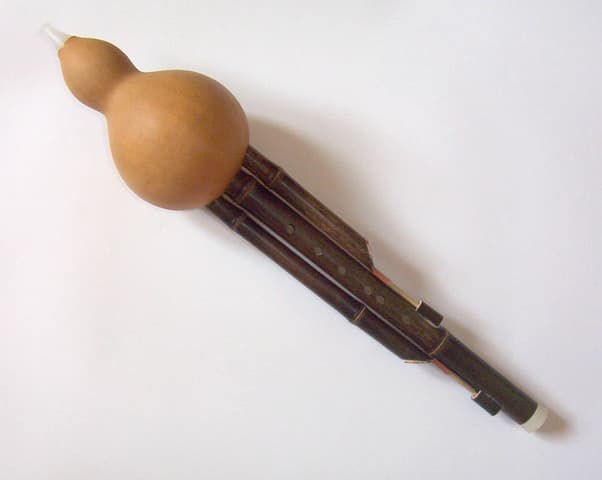
The hulusi
There are various types of flutes made from gourd. The hulusi is a wind instrument with free reed originating from China, Vietnam, and the Shan State. It is also played by the indigenous people of Assam. The instrument is held vertically and consists of three bamboo pipes that go through a wind chest made of Calabash gourd. The center pipe has finger holes, while the outer two serve as drone pipes.
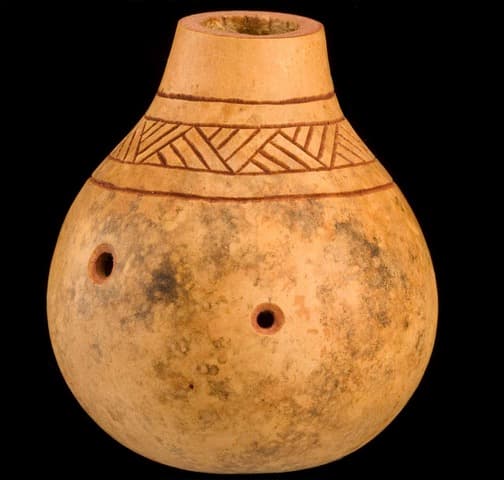
The nose flute
The nose flute is a unique wind instrument that is played by blowing air through the nose, producing a distinct sound. It is commonly used in traditional music and dances in Polynesia, Hawaii, Fiji, Tonga, and some African cultures. Despite its unusual playing method, the nose flute has been used in music for centuries and has a sound that is different from other wind instruments. In some cultures, the instrument has spiritual significance and is used in ceremonies and rituals. Some nose flutes are made of gourds, like the Māori “kōauau ponga ihu” from New Zealand.
Bamboo
In addition to using gourds to make instruments, bamboo is another common material for making traditional instruments. Following the last section about flutes, many flutes are made of bamboo, such as the Andean panpipe or Sikus, and mouth organ.

Siku
Sikus, wind instruments used in Andean music, are crafted from various types of bamboo, each with its unique tonal quality. The bamboo tubes or pipes closed at one end, are cut to different lengths and bound together with plant fibers. The musician blows into the open end of the sikus, producing a sound that varies depending on the length and thickness of the pipes. The resulting melody is a fundamental aspect of Andean culture and is deeply rooted in the region’s traditions and history. Hocketing or interlocking is an important technique among Siku players.
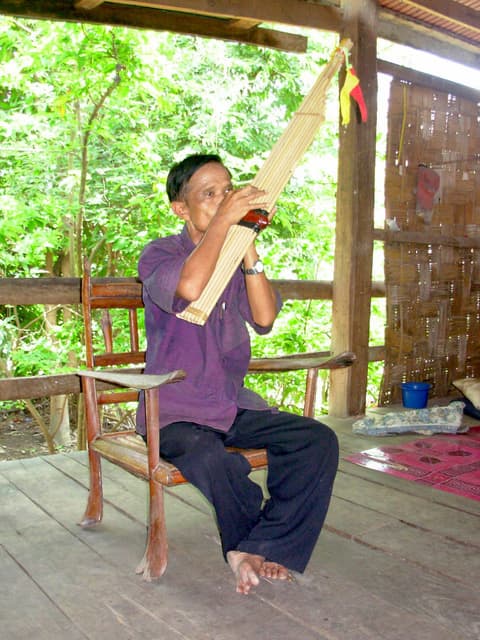
The Khene
A mouth organ is a musical instrument from the free-reed aerophone family. It has one or more air chambers fitted with a free reed. This instrument is known by many different names and is found all around the world. In Asia, there are several types of mouth organs, such as sheng, khaen, lusheng, yu, shō, and saenghwang. These instruments consist of a number of bamboo pipes of varying lengths that are fixed into a wind chest.
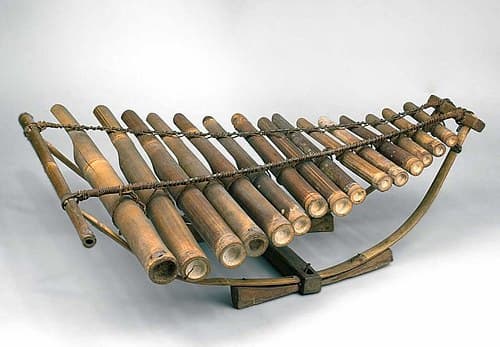
Calung
The Calung is a type of bamboo xylophone from Indonesia. It produces a woody sound when bamboo tubes are struck at the base.
Symphony no.40 Mozart (cover) by Saung Angklung Udjo, Bandung
The angklung is another musical instrument from Indonesia made of various bamboo tubes attached to a bamboo frame. This instrument is UNESCO officially recognized by the Indonesian angklung as a Masterpiece of the Oral and Intangible Heritage of Humanity.
The instruments mentioned above are only a few examples of the numerous world instruments that are made from bamboo and gourd. But are there more instruments that are made from plants? Yes, there are. In fact, I wrote this article because of a video I watched a few weeks ago – a vegetable orchestra was the subject of the video.
The Vegetable Orchestra – Transplants
It is a performance by the Vegetable Orchestra in Vienna. Founded in 1998, the orchestra is probably one of the earliest vegetable orchestras. That being said, there are many more vegetable orchestras in the world, including one based in Long Island and one in London.
The London Vegetable Orchestra sing RESOLUTION SONG
Maybe try turning a fruit or vegetable into an instrument before eating it next time.
For more of the best in classical music, sign up for our E-Newsletter



